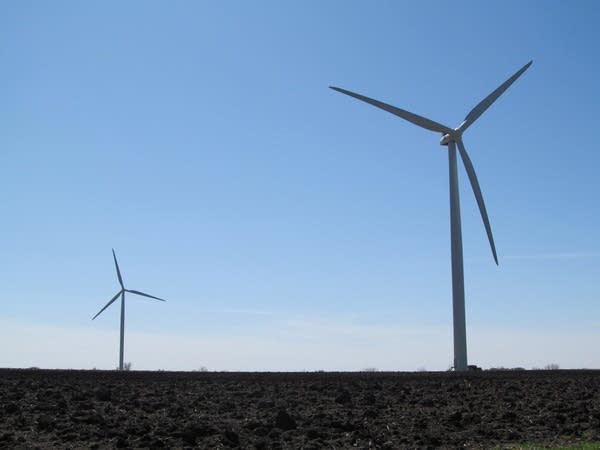U of M Morris now carbon neutral on electricity

Like this?
Log in to share your opinion with MPR News and add it to your profile.
Like this?
Thanks for liking this story! We have added it to a list of your favorite stories.
The University of Minnesota, Morris says it now has a net-zero carbon footprint when it comes to electricity use.
The west-central prairie campus has long been known for its commitment to renewable energy and sustainability. The latest milestone means the balance of the electricity the university uses is generated from clean energy sources that don’t give off carbon dioxide, which contributes to climate change.
“This has been a big goal for the campus for over a decade,” said Troy Goodnough, the university’s sustainability director.
About 70 percent of campus electricity comes from renewable energy sources that it either produces itself or buys from Otter Tail Power Company.
Support the News you Need
Gifts from individuals keep MPR News accessible to all - free of paywalls and barriers.
The majority — about 60 percent — is produced on campus by the university’s two wind turbines, which generate more than 10 million kilowatts of power every year. The campus uses about half that amount, and the other half supplies the local power grid.
That excess of wind power allowed the university to buy back renewable energy credits, which offset the electricity produced from fossil fuels that the campus buys from Otter Tail Power, Goodnough said.
“Being able to access those renewable energy credits from our own project is really cool,” he said. “That’s a big part of how we got over the finish line.”
The campus also gets energy from solar panels and a plant that burns biomass such as wood chips and corn cobs to make steam.
In 2019, Environment America recognized the University of Minnesota, Morris for producing more renewable electricity per full-time student than any other campus in the United States.
“We’ve been really lucky that over the past decade, what’s been consistent is our students have been the biggest catalyst,” Goodnough said. “They worked with the campus at almost every step of the way to advocate for change or even participate in the planning work.”
The university aims to be completely carbon neutral, meaning it eliminates or balances all carbon emissions from heating buildings, refrigeration, transportation and other types of energy use.
Goodnough said the university is pursuing other energy goals, such as developing innovative ways to store clean energy.
It’s also part of an initiative known as the “Morris Model”, which is working to expand sustainability efforts in the wider community.


